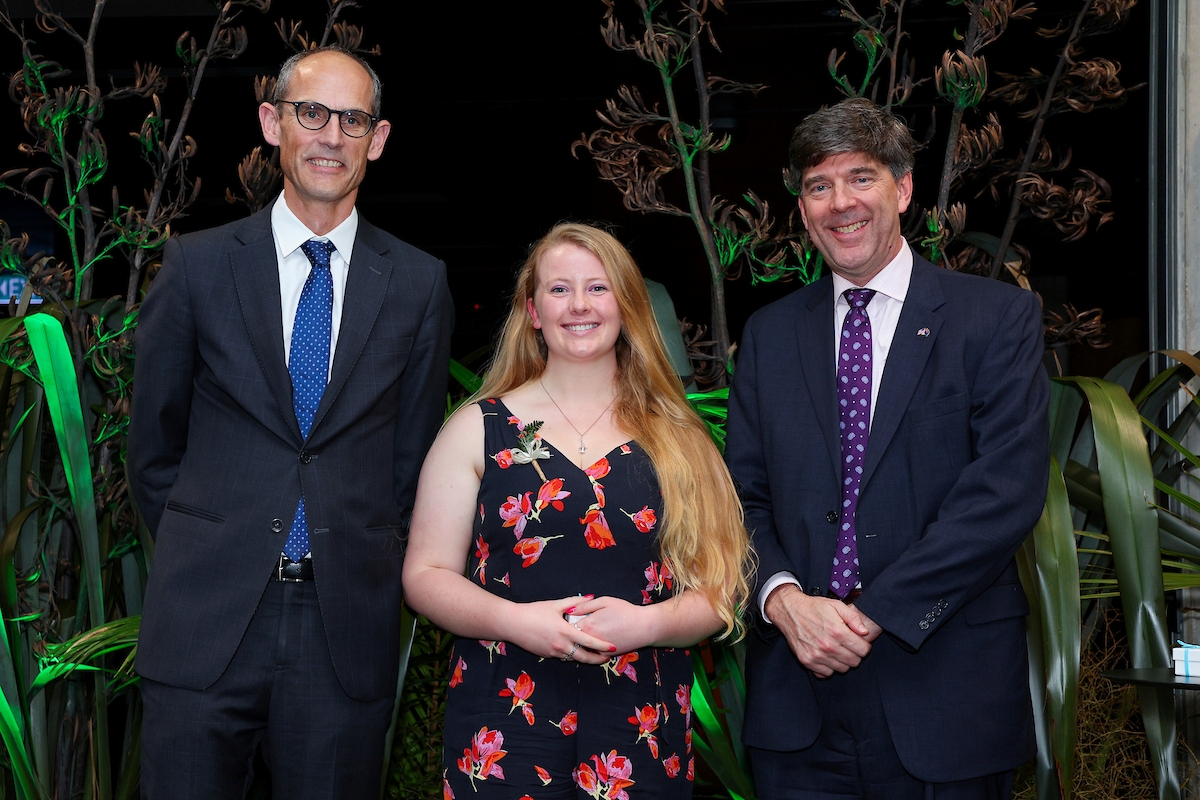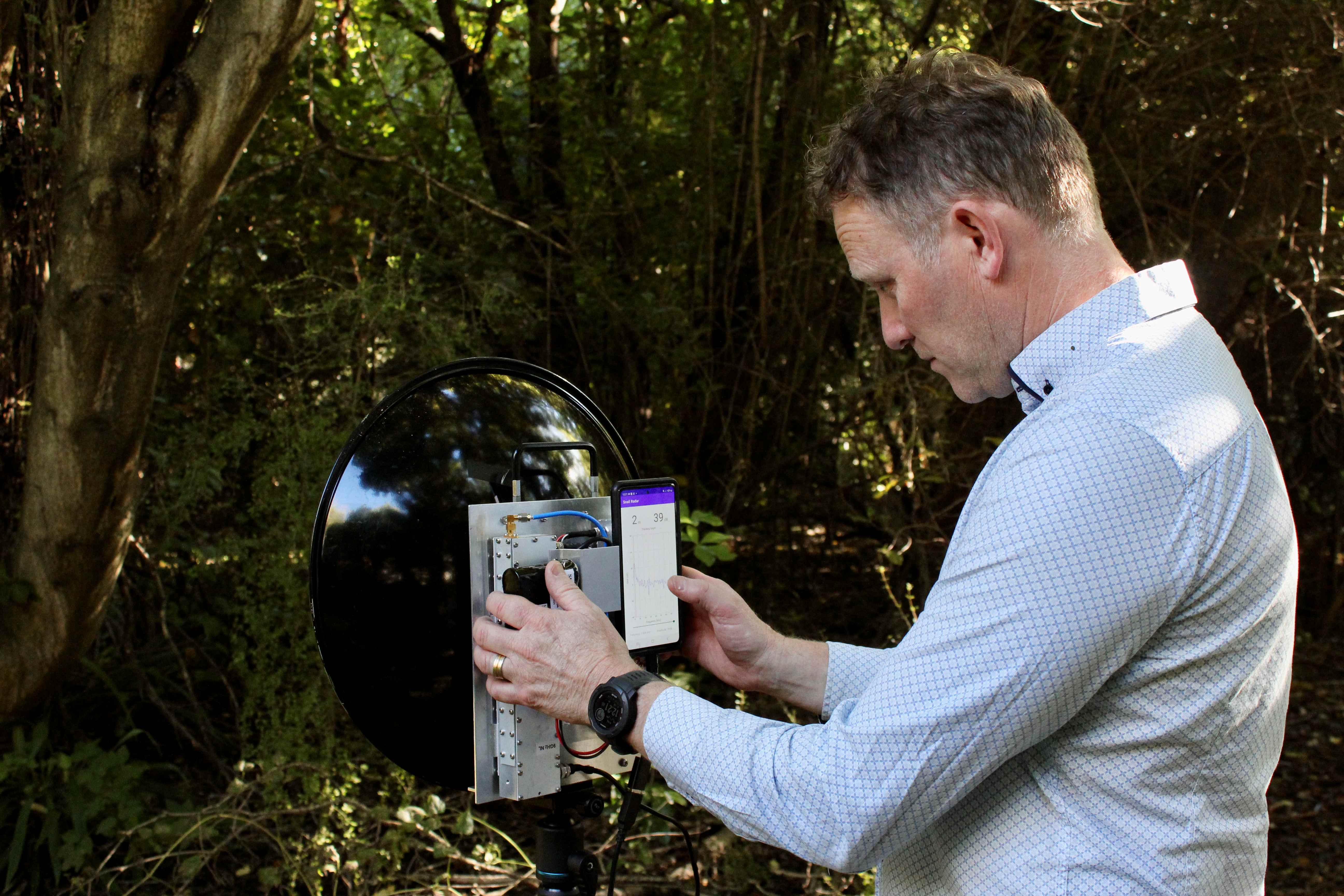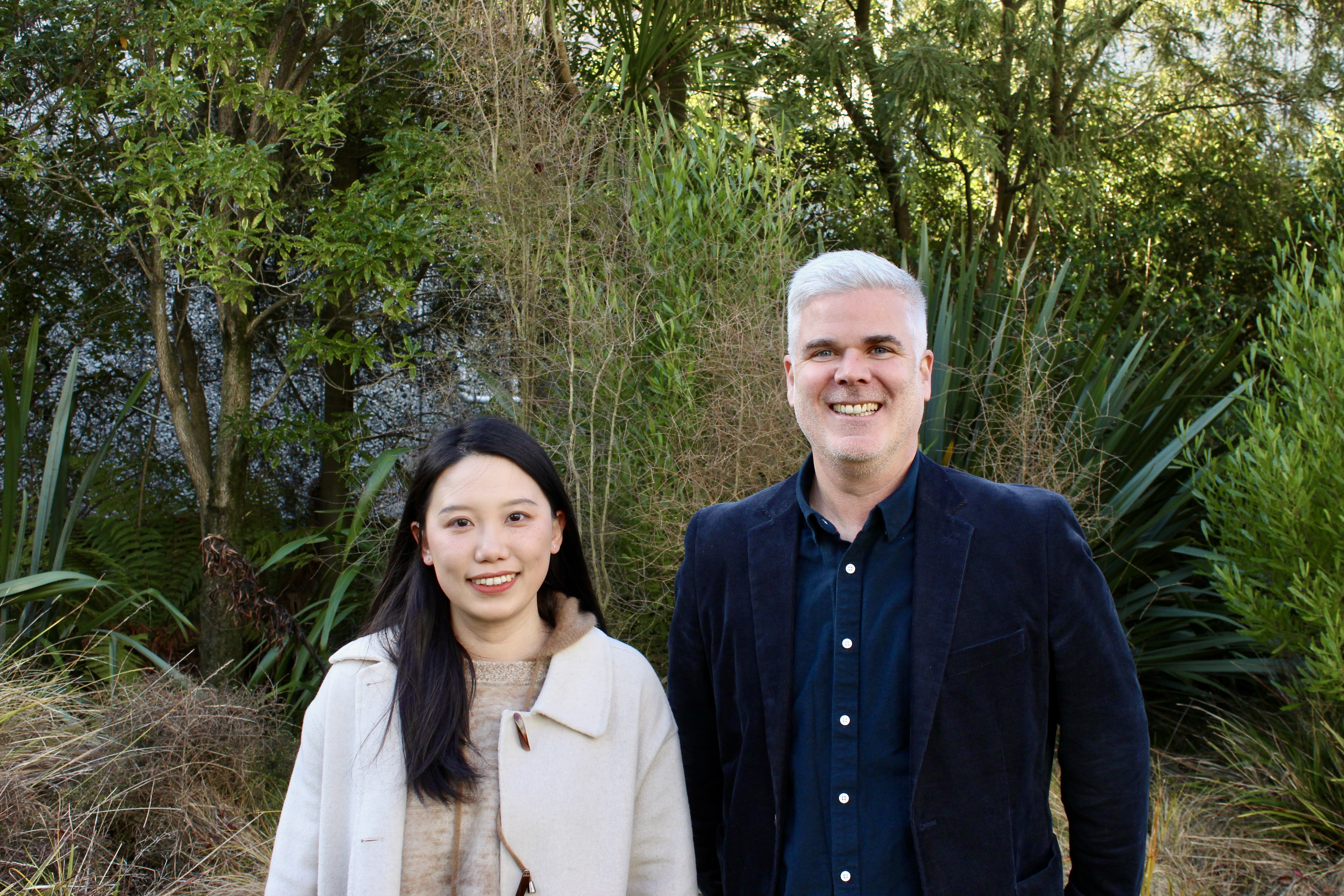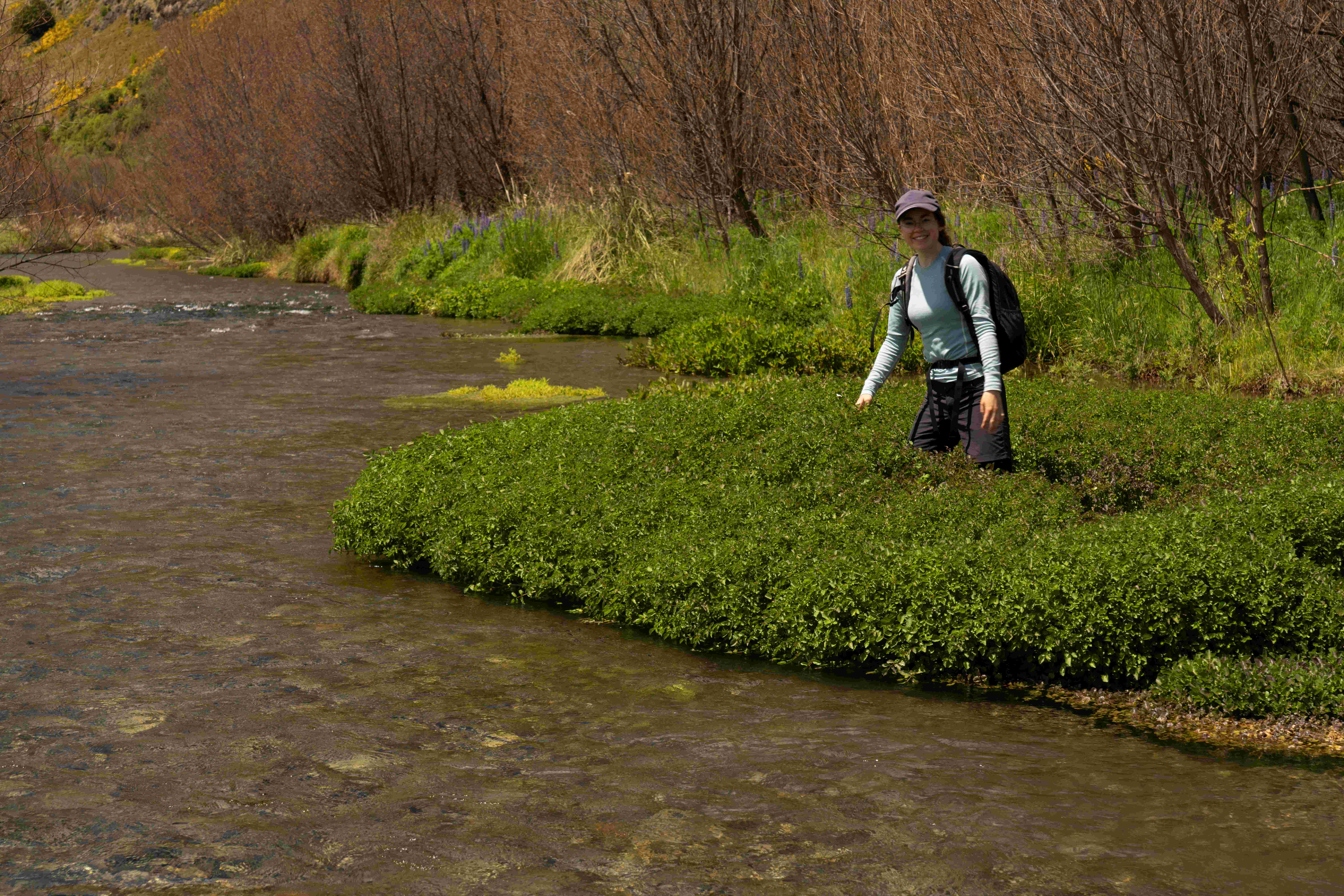Jacob Blokland pictured with the fossils in the Flinders University laboratory. Image courtesy of Flinders University.
A paper from University of Canterbury (UC) alumnus Jacob Blokland published in United States palaeontology journal Palaentologica Electronica this week, shows how an ancient penguin species discovered on the Rēkohu Chatham Islands helps bridge the gap between extinct giant penguins and their modern relatives.
The newly described Kupoupou stilwelli lived on the Chatham Islands between 62.5 and 60 million years ago.
It shared the seas with several ancient penguin species recently discovered on the South Island’s east coast, including some giant species, but next to its human-sized cousins, including the recently described monster penguin Crossvallia waiparensis, Kupoupou was comparatively small – no bigger than modern King Penguins, which stand 1.1 metres tall.
 'Artists' impression of Kupoupou stilwelli' by Jacob Blokland.
'Artists' impression of Kupoupou stilwelli' by Jacob Blokland.
Kupoupou also had proportionally shorter legs than the earliest fossil penguins. In this respect it was more like the penguins of today, meaning it would have waddled on land.
It lived at a time when there was no ice cap at the South Pole and the seas around New Zealand were tropical or subtropical.
Jacob’s research was supervised by Professor Paul Scofield, Canterbury Museum Senior Curator Natural History, who is also an Adjunct Professor at UC, and Associate Professor Catherine Reid from UC’s Department of Geological Sciences.
“The collaboration between UC and Canterbury Museum continues a long history of cooperation, and opened up new opportunities for Jacob in his research,” Associate Professor Reid said.
Jacob was also supported by Associate Professor Trevor Worthy at Flinders University.
Jacob, a PhD candidate at Flinders University in Australia, described the new species based on the fossilised bones of five partial skeletons. Another two specimens showed a second, larger penguin species was also present on the Chatham Islands, but there was not enough material to formally name it. All the described skeletons were found on the Chatham Islands between 2006 and 2011.
The fossils were discovered by a group led by palaeontologist Jeffrey Stilwell, an Associate Professor from Monash University in Melbourne, and included Alan Tennyson from Te Papa Tongarewa the Museum of New Zealand and Professor Julia Clark from University of Texas at Austin. The species is named after Associate Professor Stilwell with all specimens now cared for by Te Papa.
Kupoupou is derived from the native language of the Chatham Islands’ indigenous Moriori people, Te Re Moriori, and means “diving bird”. Kupoupou is one of only a handful of animals with a Te Re Moriori scientific name.
Jacob says Kupoupou fills a gap between ancient and modern penguins.
“The shortened hind limb bone of Kupoupou approaches the form of many more recent, similarly sized penguins. Its shorter legs were probably used in a different way than some other early penguins, and gave it a competitive advantage in the water,” he says.
“The fact that we’ve now found so many penguin species in and around the South Island’s east coast suggests this area played an important role in the development of penguins. It might even be where they originated.”
Dr Scofield says Jacob’s paper provides further support for the theory that penguins rapidly evolved shortly after the period when dinosaurs still walked the land and giant marine reptiles swam in the sea.
“We think it’s likely that the ancestors of penguins diverged from the lineage leading to their closest living relatives – such as albatross and petrels – during the Late Cretaceous period, and then many different species sprang up after the dinosaurs were wiped out. It’s not impossible that penguins lost the ability to fly and gained the ability to swim after the extinction event of 66 million years ago, implying the birds underwent huge changes in a very short time. If we ever find a penguin fossil from the Cretaceous period, we’ll know for sure.”







%20photo%20credit%20Angus%20McIntosh.jpg)


